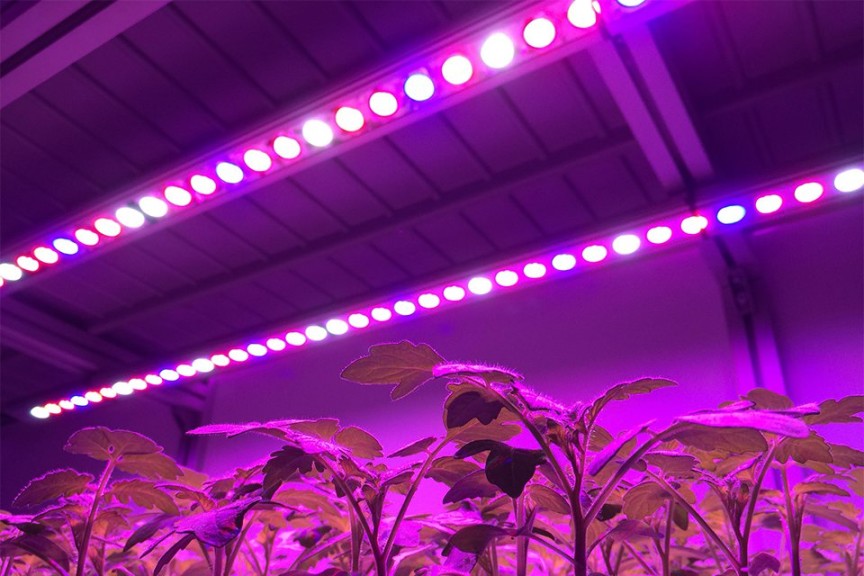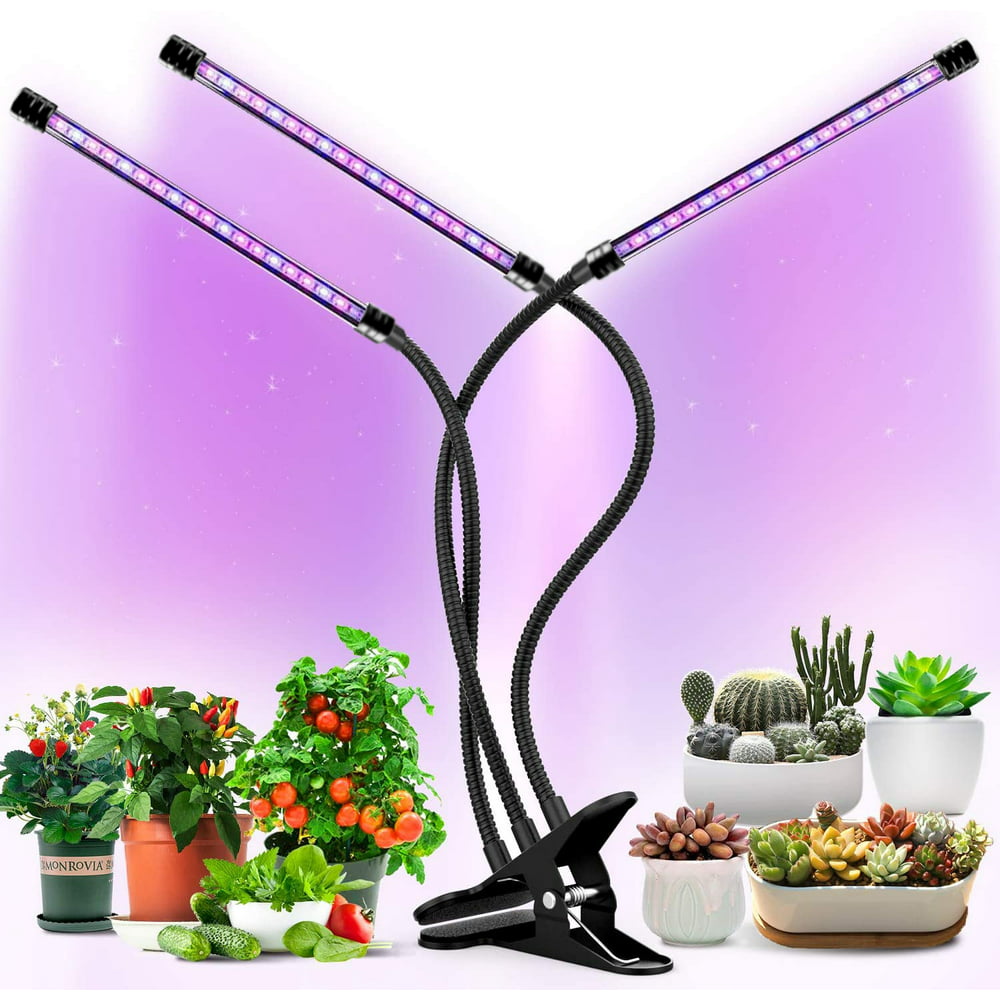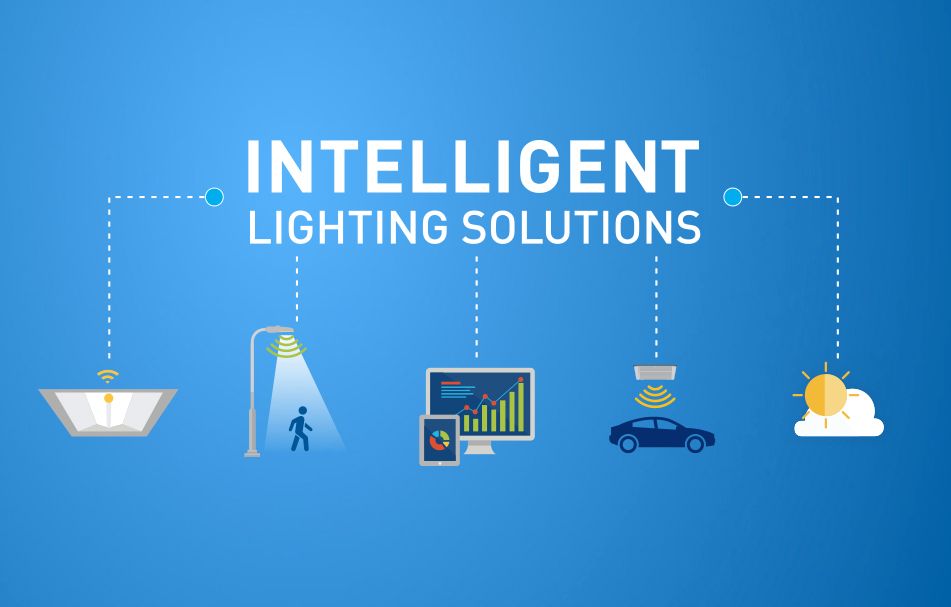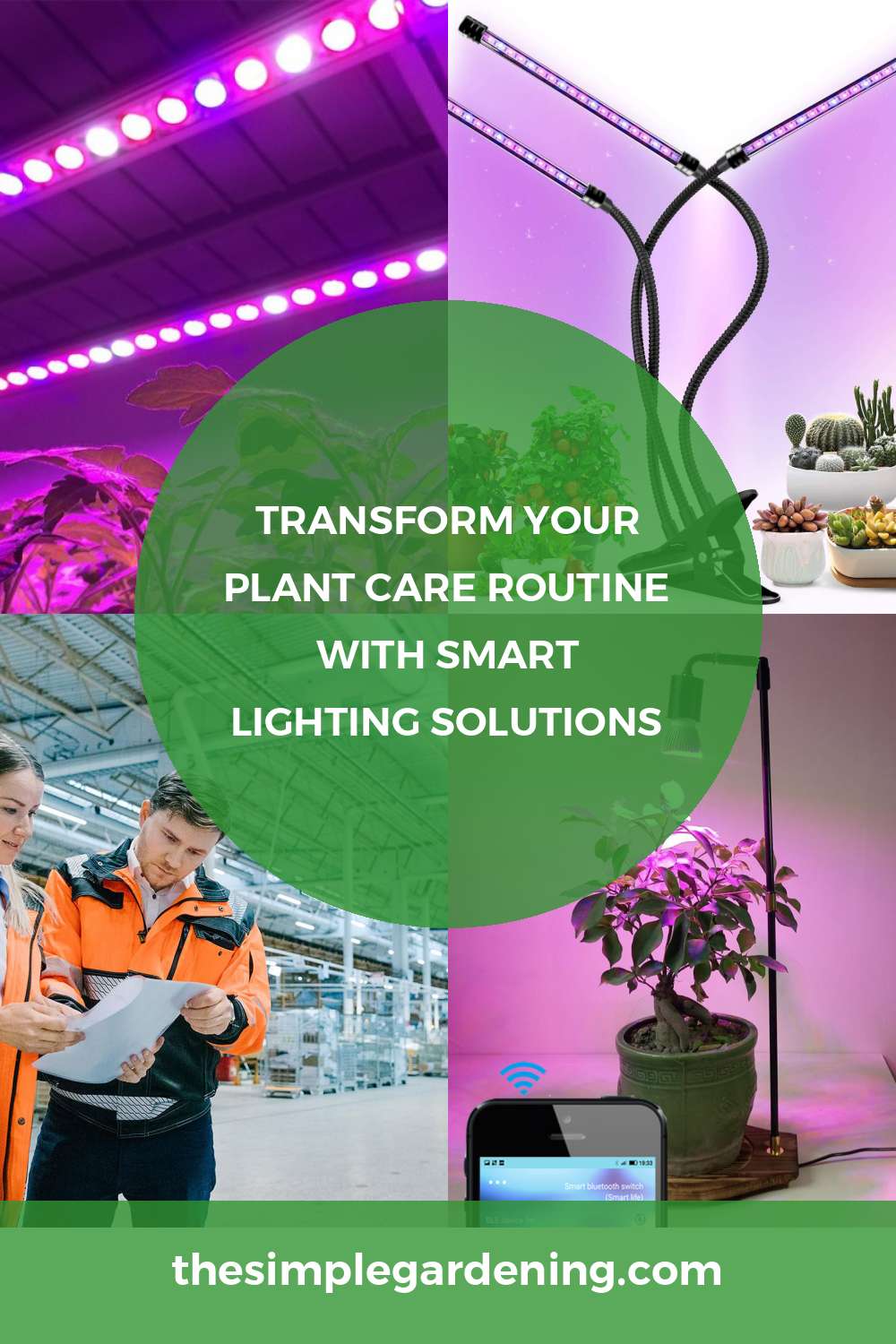Smart lighting technology has revolutionized many aspects of daily life, and plant care is no exception. With smart lighting, you can optimize the growth conditions for your plants by controlling light intensity, duration, and spectrum through various smart devices and applications.
Table: Key Features of Smart Lighting Technology
| Feature | Description | Benefits |
|---|---|---|
| Remote Control | Adjust lights via smartphone apps | Convenience, flexibility |
| Automated Schedules | Set lighting schedules for optimal plant growth | Consistency, reduces manual work |
| Light Spectrum Control | Customize light spectrum to suit different plant needs | Improved plant health and yield |
| Energy Efficiency | Uses less energy than traditional lighting solutions | Cost savings, eco-friendly |
| Integration with Sensors | Adjusts lighting based on real-time sensor data | Optimized growth environment |
Importance of Proper Lighting in Plant Growth
Proper lighting is essential for plant growth because it influences photosynthesis, the process by which plants convert light energy into chemical energy. Without adequate light, plants can suffer from poor growth, reduced yield, and even death.
Benefits of Smart Lighting for Plant Care
Smart lighting offers numerous benefits over traditional lighting solutions:
- Customization: Tailor the light spectrum, intensity, and duration to the specific needs of each plant species.
- Energy Savings: Smart lighting systems are more energy-efficient, reducing electricity costs.
- Automation: Automated schedules ensure that plants receive the right amount of light at the right times, promoting healthier growth.
Understanding Plant Light Requirements
Photosynthesis and Light Spectrum
Photosynthesis is the process by which plants use light to synthesize foods from carbon dioxide and water. Light spectrum plays a crucial role, with blue and red wavelengths being the most effective for plant growth.
Table: Light Spectrum and Plant Growth
| Wavelength (nm) | Light Color | Effect on Plants |
|---|---|---|
| 400-500 | Blue | Promotes vegetative growth, leaf development |
| 600-700 | Red | Encourages flowering and fruit production |
| 500-600 | Green/Yellow | Least effective, but still useful |
Light Intensity and Duration
The intensity and duration of light also affect plant growth. Too much or too little light can stress plants, leading to suboptimal growth.
Key Points:
- Light Intensity: Measured in lumens or PAR (Photosynthetically Active Radiation).
- Duration: Refers to the number of hours light is provided per day.
Specific Light Needs for Different Plant Types
Different plants have varying light requirements. For instance, succulents need intense, direct light, while ferns thrive in lower, indirect light.
Table: Light Requirements for Common Plant Types
| Plant Type | Light Requirement | Notes |
|---|---|---|
| Succulents | High light | Direct sunlight for 6-8 hours daily |
| Ferns | Low to medium light | Indirect light, avoid direct sunlight |
| Flowering plants | Medium to high light | Varies, but often needs more light during blooming |
Components of Smart Lighting Systems
Smart Bulbs: Types and Features
Smart bulbs are the core component of any smart lighting system. They come in various types, each with distinct features.
Table: Types of Smart Bulbs
| Type | Features | Best Use Case |
|---|---|---|
| LED Grow Lights | Energy-efficient, customizable spectrum | General plant care |
| Full Spectrum Bulbs | Mimics natural sunlight | Comprehensive growth |
| Adjustable Spectrum | Allows spectrum tuning | Specific growth stages |
Controllers and Sensors
Controllers and sensors are essential for automating and optimizing smart lighting systems.
Key Points:
- Controllers: Manage light schedules and intensity.
- Sensors: Monitor environmental conditions like light levels, temperature, and humidity.
Integration with Smart Home Ecosystems
Integrating your smart lighting system with a smart home ecosystem can enhance convenience and functionality.
Examples:
- Alexa: Voice-controlled adjustments.
- Google Home: Integration with other smart devices for holistic automation.
Types of Smart Lighting Solutions
LED Grow Lights
LED grow lights are popular for their energy efficiency and effectiveness. They offer a customizable light spectrum and have a longer lifespan compared to traditional lighting.
Full Spectrum vs. Targeted Spectrum Lighting
Full-spectrum lights mimic natural sunlight, while targeted spectrum lights focus on specific wavelengths.
Table: Comparison of Full Spectrum and Targeted Spectrum Lighting
| Feature | Full Spectrum | Targeted Spectrum |
|---|---|---|
| Light Range | Wide range (400-700 nm) | Specific wavelengths |
| Versatility | Suitable for all plant stages | Best for targeted growth phases |
| Energy Efficiency | Moderate | High |
Adjustable Spectrum Lighting
Adjustable spectrum lighting allows you to tailor the light spectrum to the specific needs of your plants at different growth stages.
Key Points:
- Flexibility: Adjust the spectrum for seedlings, vegetative, and flowering stages.
- Optimization: Promotes better growth and yield.

Source Image: www.greenhousegrower.com
Designing a Smart Lighting Plan for Plants
Assessing Your Plant’s Lighting Needs
Before setting up a smart lighting system, assess your plants’ specific lighting requirements.
Steps:
- Identify Plant Types: Understand the light needs of each plant.
- Evaluate Current Conditions: Check the natural light availability in your space.
- Determine Goals: Decide if you’re aiming for growth, flowering, or maintenance.
Positioning Lights for Optimal Coverage
Proper positioning ensures that all parts of your plants receive adequate light.
Table: Tips for Light Positioning
| Tip | Description |
|---|---|
| Height Adjustment | Position lights at an optimal height for even coverage |
| Angle Positioning | Adjust angles to prevent shadows |
| Light Spacing | Ensure even spacing to cover all plants |
Creating a Lighting Schedule
A well-structured lighting schedule is crucial for plant health.
Steps:
- Determine Duration: Set the number of light hours needed daily.
- Automate Timing: Use smart timers to automate on/off cycles.
- Adjust Seasonally: Modify the schedule based on seasonal changes.
Installation of Smart Lighting Systems
Setting Up Smart Lights: Step-by-Step Guide
Setting up smart lights involves several steps to ensure proper installation and functionality.
Table: Steps for Installing Smart Lights
| Step | Description |
|---|---|
| Unbox and Inspect | Check all components for damage or defects |
| Mount Fixtures | Securely mount light fixtures in the desired locations |
| Connect Power | Safely connect lights to the power source |
| Pair with App | Use the app to pair lights with your smart home system |
Wiring and Electrical Considerations
Proper wiring and electrical setup are crucial for safety and functionality.
Key Points:
- Use Correct Voltage: Ensure lights are compatible with your electrical system.
- Safety First: Follow all electrical safety guidelines to prevent hazards.
Safety Measures
Implementing safety measures protects both you and your plants.
Safety Tips:
- Avoid Water Contact: Keep electrical components away from water.
- Regular Inspections: Periodically check for any signs of wear or damage.
Automating Plant Lighting
Using Timers and Schedulers
Timers and schedulers automate the lighting process, ensuring consistency.
Table: Benefits of Timers and Schedulers
| Benefit | Description |
|---|---|
| Consistency | Ensures plants receive light at regular intervals |
| Convenience | Reduces the need for manual adjustments |
| Efficiency | Optimizes energy use by preventing over-lighting |
Implementing Light Sensors
Light sensors adjust the lighting based on real-time conditions, optimizing plant growth.
Key Points:
- Adaptive Lighting: Automatically adjusts light intensity based on ambient light.
- Energy Savings: Reduces energy consumption by avoiding unnecessary lighting.
Integration with Smart Home Hubs (e.g., Alexa, Google Home)
Integrating with smart home hubs enhances control and automation.
Examples:
- Alexa: Voice-activated light adjustments.
- Google Home: Synchronization with other smart devices for comprehensive automation.
Monitoring and Adjusting Light Levels
Using Smart Sensors to Monitor Light Intensity
Smart sensors provide real-time data on light intensity, helping you maintain optimal conditions.
Table: Features of Smart Light Sensors
| Feature | Description |
|---|---|
| Real-Time Monitoring | Continuous data on light levels |
| Alerts and Notifications | Alerts when light levels are outside optimal range |
| Historical Data Logging | Tracks light data over time for trend analysis |
Adjusting Light Levels Based on Plant Growth Stages
Different growth stages require different light levels.
Growth Stages:
- Seedling Stage: Lower light intensity to prevent burn.
- Vegetative Stage: Higher intensity for robust growth.
- Flowering Stage: Adjust spectrum and intensity to promote blooming.
Troubleshooting Common Lighting Issues
Addressing lighting issues promptly ensures healthy plant growth.
Common Issues and Solutions:
- Insufficient Light: Increase light intensity or duration.
- Overexposure: Reduce light intensity or move lights further away.
- Uneven Coverage: Adjust positioning or add more lights.

Source Image: www.walmart.com
Energy Efficiency and Cost Savings
Energy Consumption of Smart Lighting Systems
Smart lighting systems are designed to be energy-efficient, reducing overall consumption.
Table: Energy Consumption Comparison
| Lighting Type | Energy Consumption (Watts) | Efficiency |
|---|---|---|
| Traditional Bulbs | 100W | Low |
| LED Grow Lights | 30W-50W | High |
| Smart LED Lights | 25W-45W | Very High |
Comparing LED to Traditional Lighting Options
LED lights offer several advantages over traditional lighting.
Advantages of LEDs:
- Lower Energy Use: LEDs consume less power.
- Longer Lifespan: LEDs last longer, reducing replacement costs.
- Better Light Quality: More control over light spectrum and intensity.
Long-Term Cost Benefits
While the initial investment in smart lighting may be higher, the long-term savings are substantial.
Cost Benefits:
- Reduced Electricity Bills: Lower energy consumption translates to savings.
- Maintenance Savings: Less frequent bulb replacements lower maintenance costs.
Environmental Control Systems
Integrating Smart Lighting with Humidity and Temperature Controls
Creating a balanced environment is crucial for plant health. Integrating smart lighting with humidity and temperature controls ensures optimal growing conditions.
Key Points:
- Automated Adjustments: Systems can adjust humidity and temperature based on light levels.
- Improved Plant Health: Balanced conditions promote better growth.
Using Smart Ventilation Systems
Smart ventilation systems help maintain air quality and temperature.
Benefits:
- Enhanced Air Circulation: Prevents mold and pests.
- Temperature Regulation: Keeps the environment stable for plant growth.
Creating a Balanced Microclimate
A balanced microclimate is essential for optimal plant health.
Components of a Balanced Microclimate:
- Light: Adequate intensity and spectrum.
- Humidity: Proper levels to prevent dehydration or over-saturation.
- Temperature: Stable temperatures to prevent stress.
Advanced Features of Smart Lighting
Remote Control and Monitoring via Apps
Remote control allows you to manage your lighting system from anywhere.
Table: Features of Smart Lighting Apps
| Feature | Description |
|---|---|
| Remote Access | Control lights from any location via the internet |
| Scheduling | Set and adjust lighting schedules |
| Monitoring | Real-time data on light levels and energy use |
Voice-Controlled Lighting Adjustments
Voice control adds a layer of convenience to managing your lighting system.
Examples:
- Alexa: “Alexa, turn on the grow lights.”
- Google Home: “Hey Google, set the plant lights to 50%.”
Data Logging and Analytics for Plant Growth
Data logging helps track plant growth and optimize conditions.
Benefits:
- Trend Analysis: Identify patterns in plant growth.
- Improved Management: Make informed decisions based on data.
Case Studies and Real-World Examples
Successful Implementation in Home Gardens
Home gardeners have seen significant improvements in plant health and yield using smart lighting.
Case Study: Home Garden
| Aspect | Before Smart Lighting | After Smart Lighting |
|---|---|---|
| Plant Growth | Slow, uneven | Fast, uniform |
| Energy Consumption | High | Reduced |
| User Convenience | Manual adjustments | Automated and remote control |
Commercial Greenhouses Using Smart Lighting
Commercial greenhouses benefit from enhanced control and efficiency.
Case Study: Commercial Greenhouse
| Aspect | Before Smart Lighting | After Smart Lighting |
|---|---|---|
| Crop Yield | Moderate | High |
| Energy Costs | High | Lower |
| Maintenance Efforts | High | Reduced |
Urban Farming and Vertical Gardens
Smart lighting is ideal for urban farming and vertical gardens, where space and light are limited.
Case Study: Urban Farm
| Aspect | Before Smart Lighting | After Smart Lighting |
|---|---|---|
| Space Utilization | Inefficient | Maximized |
| Crop Quality | Variable | Consistent |
| Energy Efficiency | Low | High |
Troubleshooting and Maintenance
Common Problems with Smart Lighting Systems
Even the best systems can encounter issues. Here are some common problems and solutions:
Table: Troubleshooting Smart Lighting Issues
| Problem | Possible Cause | Solution |
|---|---|---|
| Lights not turning on | Connectivity issue | Check Wi-Fi connection, reset devices |
| Uneven light coverage | Poor positioning | Adjust light placement |
| Flickering lights | Electrical issue or faulty bulb | Inspect wiring, replace bulbs |
Routine Maintenance Tips
Regular maintenance ensures your smart lighting system operates smoothly.
Maintenance Tips:
- Clean Lights Regularly: Dust and dirt can reduce light efficiency.
- Check Connections: Ensure all connections are secure and free from damage.
- Update Software: Keep your smart lighting app and devices updated.
Upgrading and Expanding Your System
As your plant collection grows, you may need to expand your lighting system.
Expansion Tips:
- Add More Lights: Ensure new lights are compatible with your existing system.
- Upgrade Components: Consider upgrading to more advanced controllers or sensors.
Sustainability and Environmental Impact
Eco-Friendly Lighting Options
Choosing eco-friendly lighting options helps reduce your environmental footprint.
Table: Eco-Friendly Lighting Features
| Feature | Description |
|---|---|
| Energy Efficiency | Uses less power, reduces greenhouse gas emissions |
| Long Lifespan | Reduces waste from frequent bulb replacements |
| Non-Toxic Materials | Safe for the environment |
Reducing Carbon Footprint with Smart Lighting
Smart lighting helps reduce your carbon footprint by optimizing energy use.
Key Points:
- Lower Energy Consumption: Smart lights use less energy than traditional bulbs.
- Reduced Emissions: Lower energy use means fewer carbon emissions.
Sustainable Practices in Plant Care
Incorporating sustainable practices into plant care enhances environmental benefits.
Sustainable Practices:
- Use Renewable Energy: Power your lights with solar panels.
- Recycle: Properly dispose of old bulbs and equipment.
- Water Conservation: Use smart irrigation systems to conserve water.
![what is a smart lighting solution and why should you care Implementing Smart Lighting Solutions for Plant Care Smart Lighting Solutions [Explained]](https://greenled.com/wp-content/uploads/2018/08/smart-lighting-solution-1920x1090.jpg)
Source Image: greenled.com
Future Trends in Smart Lighting for Plant Care
Emerging Technologies in Smart Lighting
New technologies are continuously emerging in the smart lighting space.
Table: Emerging Smart Lighting Technologies
| Technology | Description |
|---|---|
| Quantum Dots | Enhances light spectrum control |
| OLED Grow Lights | Flexible, efficient lighting options |
| AI Integration | Uses AI to optimize lighting conditions |
Integration with AI and Machine Learning
AI and machine learning can further optimize plant care by predicting and adjusting lighting needs.
Benefits of AI Integration:
- Predictive Adjustments: AI can predict optimal lighting adjustments based on plant growth patterns.
- Enhanced Efficiency: Reduces manual intervention and optimizes resource use.
The Future of Urban Agriculture and Smart Farms
Smart lighting is a key component of the future of urban agriculture and smart farms.
Future Trends:
- Vertical Farming: Maximizes space and efficiency in urban environments.
- Automated Farms: Fully automated systems for large-scale food production.
DIY Smart Lighting Projects
Building Your Own Smart Grow Lights
Building your own smart grow lights can be a rewarding project.
Steps:
- Gather Materials: LED strips, controllers, sensors.
- Assemble Components: Connect LEDs to the controller.
- Program Settings: Use software to set up light schedules and controls.
Customizing Light Spectrum for Specific Plants
Customizing the light spectrum can improve plant health and yield.
Customization Tips:
- Research Plant Needs: Understand the specific light needs of your plants.
- Adjust Spectrum: Use adjustable spectrum lights to provide the ideal light conditions.
Open Source Smart Lighting Solutions
Open source solutions offer flexibility and community support.
Examples:
- Arduino Projects: Use Arduino for custom lighting controls.
- Community Forums: Join forums to share ideas and solutions.
Legal and Regulatory Considerations
Understanding Local Regulations on Smart Lighting
Before installing a smart lighting system, understand local regulations.
Regulatory Considerations:
- Electrical Codes: Ensure compliance with local electrical codes.
- Building Permits: Check if you need permits for installation.
Safety Standards and Certifications
Ensure your system meets safety standards and certifications.
Standards to Look For:
- UL Certification: Indicates safety compliance.
- Energy Star: Ensures energy efficiency.
Compliance with Energy Efficiency Standards
Complying with energy efficiency standards can reduce costs and environmental impact.
Energy Standards:
- Energy Star: Look for Energy Star-rated products.
- Local Incentives: Check for local incentives for energy-efficient installations.
Educational Resources and Community Support
Online Courses and Tutorials
Online resources can help you learn more about smart lighting for plant care.
Table: Educational Resources
| Resource | Description |
|---|---|
| Online Courses | Comprehensive courses on smart lighting systems |
| Video Tutorials | Step-by-step guides on installation and setup |
| Webinars | Interactive sessions with experts |
Plant Care Forums and Communities
Joining forums and communities can provide support and advice.
Popular Forums:
- Reddit: Subreddits like r/IndoorGarden and r/SmartHome.
- GardenWeb: A community for gardeners of all levels.
Professional Associations and Certifications
Professional associations offer certifications and further education.
Associations:
- American Horticultural Society: Offers resources and certification programs.
- Lighting Research Center: Provides research and education on lighting.
Economic Impact of Smart Lighting Solutions
Market Analysis of Smart Lighting Industry
The smart lighting industry is growing rapidly, driven by demand for energy-efficient and customizable solutions.
Table: Market Analysis
| Factor | Impact |
|---|---|
| Market Growth | Increasing adoption in residential and commercial sectors |
| Technology Advances | Continuous innovation driving market expansion |
| Consumer Awareness | Growing awareness of benefits fueling demand |
Investment Opportunities
Investing in smart lighting technologies can be lucrative.
Opportunities:
- Startups: Invest in innovative startups.
- Public Companies: Buy stocks of leading companies in the sector.
Economic Benefits for Small-Scale Farmers
Small-scale farmers can benefit economically from smart lighting.
Benefits:
- Increased Yield: Higher crop production leads to better profits.
- Cost Savings: Reduced energy and maintenance costs.

Source Image: www.aliexpress.com
Implementing Smart Lighting Solutions for Plant Care

Source Image: www.creelighting.com
![40a4f3224bf743ce8b8ad333ea3bded b802 Implementing Smart Lighting Solutions for Plant Care [PDF] Smart lighting system control strategies for mercial buildings](https://d3i71xaburhd42.cloudfront.net/40a4f3224bf743ce8b8ad333ea3bded14519b802/7-Figure5-1.png)
Source Image: www.semanticscholar.org

Source Image: www.yourlite-smart.com
![what is a smart lighting solution and why should you care Implementing Smart Lighting Solutions for Plant Care Smart Lighting Solutions [Explained]](https://greenled.fi/wp-content/uploads/2018/08/benefits-of-smart-lighting-solutions-some-1200x630.png)
Source Image: greenled.com

